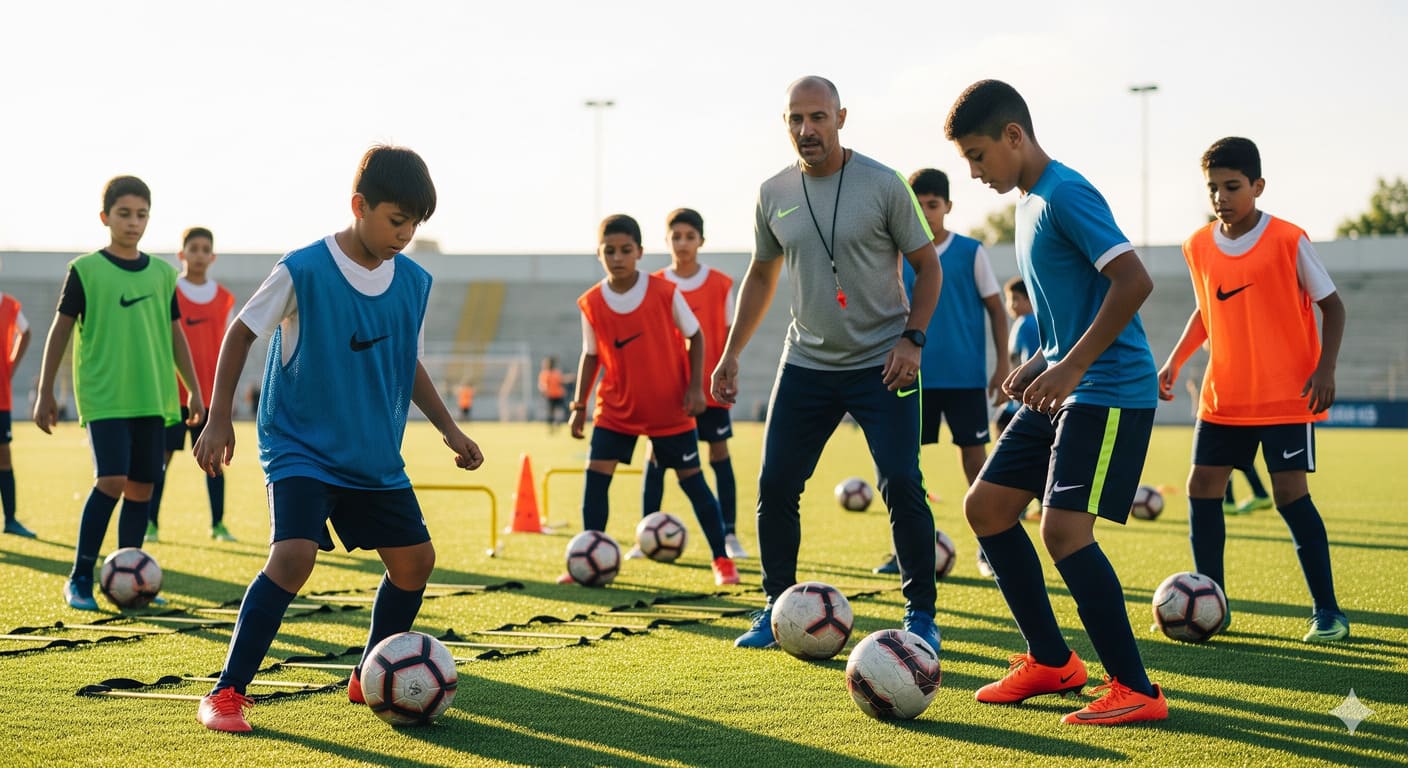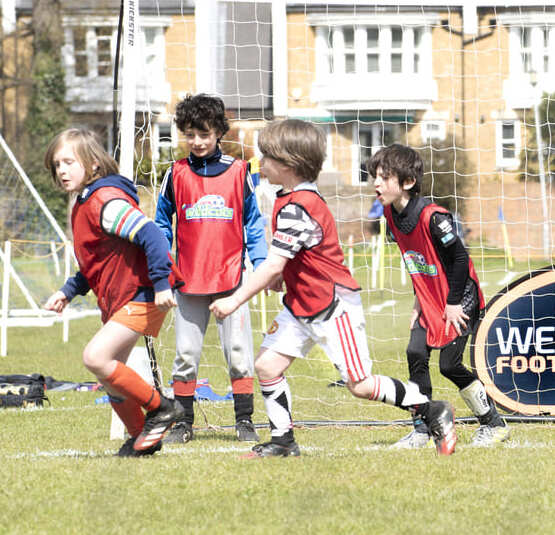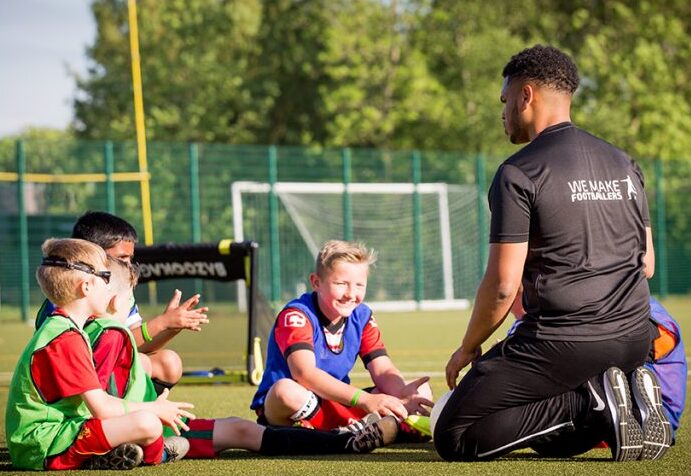Master the Ginga: Brazil’s Magical Football Philosophy
Brazilian football doesn’t follow patterns - it breaks them. Where other styles lean on geometry or discipline, Brazil turns the game into movement, rhythm, and joy. The thread running through all this is Ginga.
Call it a sway. A flow. A deception. Ginga football is the foundation of Brazil’s unique way of playing - loose yet lethal, improvisational yet precise. It combines instinct with expression, structure with spontaneity, backbone with balance.
You're not just learning to play football when you study Ginga; you're learning to move like Brazilian football itself has moved for nearly a century - with rhythm, intent, and defiance.
What is Ginga?
Ginga (pronounced zheen-gah) is a Brazilian word meaning “sway,” but in football, it describes the subtle, continuous movement that allows a player to stay unpredictable. It's sidesteps without touching the ball, balance without stillness, threat without rush. It shows up in the pause before a step-over, the lean before a dribble, or the shift before a shot.
This motion isn’t random - it’s designed to bend time and space on the pitch. Great Ginga players don't just outrun their opponents. They send them the wrong message with their body, then move in the opposite direction.
In the context of Brazilian style football, Ginga is everywhere - from the beach pitches of Bahia to training grounds in São Paulo. It's not taught as a specific technique, but as a rhythm players grow into from an early age.

Origins of Ginga in Brazilian Culture
The ginga meaning goes far beyond sport. You’ll find its deeper roots in Capoeira, the Afro-Brazilian martial art that combines fight, music, and dance. Derived from enslaved Africans' need to disguise resistance as performance, Capoeira revolved around feints, low stances, deceptive rhythm - all in constant motion.
This consistent swaying, known as gingado, became a cultural foundation - one that eventually seeped into Brazilian football skills, especially in Brazilian street football, where freedom of movement meant survival. In games played on concrete or dirt, without coaches or cones, players developed body awareness, balance, and swagger.
They learned to move before they learned to pass. To sway before they scored. It was here, on the streets, that ginga football was mastered before it had a name.
Characteristics of Ginga Style
Flair and Creativity on the Pitch
At the core of Ginga lies improvisation. Where other styles drill a move into repetition, Ginga creates it on the spot. Think of Pelé gliding past defenders without seemingly trying. Or Ronaldinho smiling as he baits a tackle before nutmegging with a no-look pass.
In Brazilian play, Ginga means the unexpected. It’s shoulder drops, body swerves, and mesmerizing dribbles. Brazilian football skills are full of movement illusions - allowing players to control time and space with the ball at their feet.
This is why Ginga dominates in 1v1 soccer Brazil environments: Ginga was made for close control battles and escape artistry.
Influence of Capoeira on Ginga
Capoeira’s impact on Ginga isn’t just cultural - it’s biomechanical. Capoeira rhythm taught Brazilian youth how to:
-
Move from the waist, not the knees
-
Maintain mobility on both legs
-
Use the upper body to mislead without touching the ball
-
Stay upright but never stiff
Capoeira develops a low base with high agility - perfect for dribbling, feinting, and reacting. This connection is why many Brazilian players develop their Brazil football skills not at academies, but in informal street sessions where dance, combat, and football collide.
Evolution of Ginga in Modern Football
Ginga’s Role in Brazil’s Football Success
Brazil’s five World Cup titles weren’t built on discipline alone. The magic came from freedom of movement - from the Ginga layered through its players:
-
Pelé: Used subtle Ginga feints to glide through defences
-
Zico: Orchestrated attacks with rhythm and tempo shifts
-
Ronaldinho: Turned football into theatre - all Ginga
-
Neymar: Carries it forward with sharp body misdirection & creativity
In each generation, Ginga fused individual brilliance with team rhythm. Whether it was Pelé’s elegance, Ronaldinho’s playfulness, or Neymar’s daring, Ginga football gave Brazil an identity that no other nation could replicate. It allowed Brazil not only to win, but to win beautifully.
Even in the era of data-driven tactics and rigid formations, the Brazilian football style continues to enchant - because Ginga remains its pulse. International teams study Brazil’s success, but few can recreate the fluidity, spontaneity, and soul that Ginga Brazil embodies.
Contemporary Players Embodying Ginga
While tactical systems evolve, certain players still carry the spirit of Ginga into modern football. Among them:
-
Neymar Jr.: Still the most obvious torchbearer. His diagonal movements, flicks, and one-touch chaos keep defenders unbalanced.
-
Vinícius Júnior: Street flair meets Champions League end product. In every 1v1, his low stance and rhythm scream ginga style.
-
Rodrygo: His ability to bounce between defenders, delay the pass, and shift tempo showcases Ginga-influenced unpredictability.
Even younger talents like Endrick and Estevão reflect this legacy - showing that players are still learning and evolving within the Ginga tradition, while adapting it to elite-level football.
Learning and Training in Ginga
Incorporating Ginga Techniques in Training
You can’t teach Ginga as a drill - but you can create environments where Ginga grows.
Inspired by sources like Soccer de Brazil, the philosophy is this: give the player freedom, rhythm, and reactions - then guide their movement.
Here are training adaptations:
Small-Sided Games
Limit space and touch. Encourage players to escape pressure, use their hips, shift weight and freeze defenders - pure brazilian street football principles.
Rhythm Circuits (Inspired by Samba Soccer Schools)
Skip cones. Instead, create rhythm stations:
-
Feint left, explode right
-
Two-step sway, then through touch
-
Mirror footwork with a partner
These build balance, timing, and controlled improvisation.
Ginga Dribble Sequences
Break away from robotic drills. Instead, use unpredictable movement repetition:
-
Shoulder feints with toe control
-
Shifts using both hips and chest
-
Silent dribbles: move the body, not the ball
Ground Moves + Reactivity Training
Combine elements of Capoeira with football:
-
Practice “gingado” movement to loosen hips
-
Add reactive defender pressure
-
Finish with a pass or directional escape
Coach not for perfect shape, but for elastic instinct.
And-most importantly-let kids play freely. Ginga isn’t born from scripting; it’s born from shaping. Give them tools, rhythm, and creativity, then stand back.
Why Ginga Still Matters
In an era defined by data, athleticism, and discipline, Ginga reminds us why football is loved in the first place. It’s about freedom, expression, unpredictability.
To learn Brazilian football skills, players and coaches must embrace not just footwork, but movement. Not just tactics, but tempo. Not just drills - but dance, decision, and joy.
The beauty of Ginga is that it isn’t just historical - it’s eternal. It pulses in backstreets, in neighbourhood games, and even now, under the brightest lights on the biggest stage.
If you want to move, think, and play like the best defenders and attackers to come out of Brazil, start here:
Master the sway. Feel the music. And let the ball follow you.



